October 19, 2011
Apples to Sauce
After traveling for eight days, seeing as many family and friends as possible, eating good meals, enjoying good company, relaxing, going to the theater and the aquarium, driving a lot and enjoying the last bits of summer weather, it took a few days to settle back into home. While getting back to everything that I need to do here, I decided it was time to gather apples and make some sauce.
I drove out to Sweetland Orchard to pick. Before I visited the trees, I sampled some of their apple varieties. I love that each one has its own flavor and texture, some are better for baking while others are perfect for eating as is. There is also the history of each type of apple which is often reflected in their names and the location where it was developed or grows best. Some of the varieties that I found commonly in Maine, like Macoun, aren't grown here. Honeycrisp is probably the Minnesota favorite, but I prefer white fleshed, sweet-tart apples like Cortlands.
I'm starting to sound like an apple nerd, and I hardly know anything about the many many types of apples. It just happens that apples are a good example of the subtle or great difference that often get overlooked in the produce aisle. With mass production and shipping of fruits and vegetables, most varieties are chosen because they survive during long distance travel and last well on the shelves. We forget about the differences which have been homogenized by large scale farming and loss of diversity. Heirloom fruits or vegetables have been grown in very specific regions or for flavors and textures that might be different than their close relatives. You might never taste the best tomato or peach grown elsewhere because they don't ship well, but you might be able to find the best tomato or watermelon that grows in your region.
Apples remind me of these subtle differences. Although they all have the same delicious crunch and juiciness, a fall apple is not just an apple. It's a Haralson, a Regent, a Macintosh, a Fireside, a Connell Red. One is sweeter, some are better for baking, one stores for longer. Of course, when I make apple sauce they all go together in one pot. But each one adds something different and they all come together for a more flavorful sauce.
Apple Sauce
I know you probably don't need a recipe for this, but I thought I would include it anyway. I usually can some sauce in quart jars for good winter eating. I cook the apples whole and use a food mill to puree them and remove cores, skin and seeds. If you don't have a food mill, remove the cores before cooking and remove the skins before you cook them if you want a smoother sauce.
apples
a splash of water or apple cider
optional: cinnamon sugar or honey
In a large heavy bottomed pot, put a little bit of water or cider. Place this on the stove over medium-high heat. Cut the apples into quarters and throw them into the pot as you go. Stir every few minutes to keep the apples on the bottom from burning. Once you have added all of your apples, bring the pot to a simmer. Continue simmering the apples until they are all completely softened and you can't see any quarters of apples. Different varieties will require more or less time to break down. Once all of the apples are soft and cooked, place the food mill over a large bowl and fill it with the hot apples. Run the apples through the food mill until they are all pureed into sauce.
Now you can add cinnamon or other spices to the apple sauce. I never add sugar to my sauce, but you can sweeten the sauce at this time. The sauce will keep, refrigerated, for several days.
If you want to can the apple sauce, return the pureed sauce to the stove. For every quart of sauce you have, stir in a tablespoon of bottled lemon juice. Prepare your canning pot and quart jars. Ladle the hot apple sauce into the jars, remove air bubbles, wipe rims and cover with lids. Process for 20 minutes in a boiling water bath. For more information the canning process, visit the National Center for Home Food Preservation.
Subscribe to:
Post Comments (Atom)

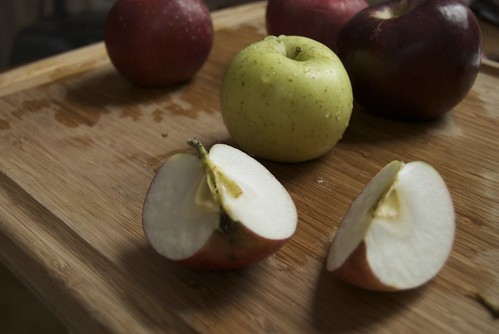
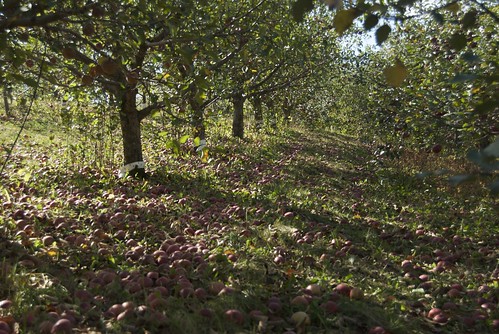
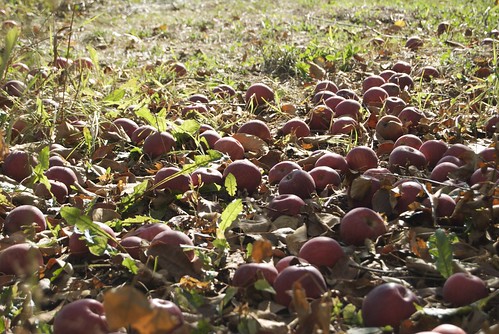
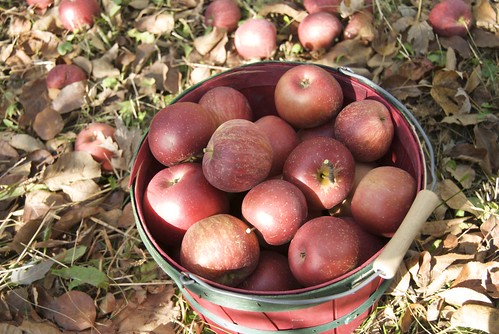
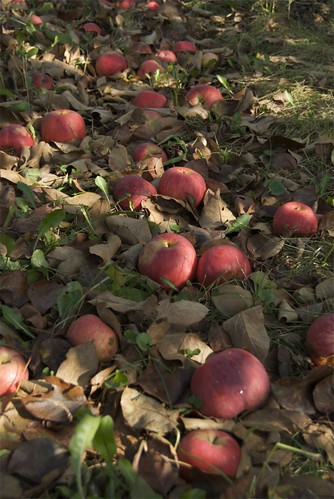
Any recommendations for a mill? I'm in need of one after buying a load of Ginger-Gold seconds!
ReplyDeleteLovely post!
Emily,
ReplyDeleteGinger gold apples sound lovely. I'm not even sure what kind of food mill I have, but I recommend one that lets you remove the screen from the bottom -- much easier to clean!
Hi Anna,
ReplyDeleteI made applesauce today! Thanks so much for the recipe! I don't have a food mill and wanted to keep the skins on, so I cooked the apples down and then food-processed them. I cooked them a little longer to soften the skins and it came out nicely.
Thanks again!
Love,
Em